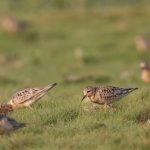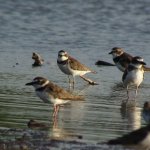This article was first posted on the Shorebird Science Blog of Manomet
Visiting wetlands, salt lagoons, and salt flats in Argentina in search of phalaropes was, for many years, a dream of mine, fed by a curiosity for learning about how they are distributed and the sites upon which they depend. I have worked with phalaropes for more than eight years; however; I must confess that our relationship has had its highs and lows as, at least on their wintering grounds, working with phalaropes can be quite challenging. For years these birds have put our plans, resources, methodologies, strategies, and budgets to the test. But, we have been lucky enough to have supporting friends and family, who often have found themselves coerced into being field volunteers, and have experienced for themselves the challenges of working with these birds, too.
In 2019, I had been going through a tough couple of months and I was beginning to think that the possibilities of continuing to work with the species were steadily diminishing. I participated in a meeting of phalarope specialists, conservationists, and managers of key important sites for the species, with the aim of sharing what I had learned from my work with Wilson’s Phalaropes in Argentina. I didn’t think that this meeting would represent a significant change in my work with the species. I couldn’t have been more wrong.
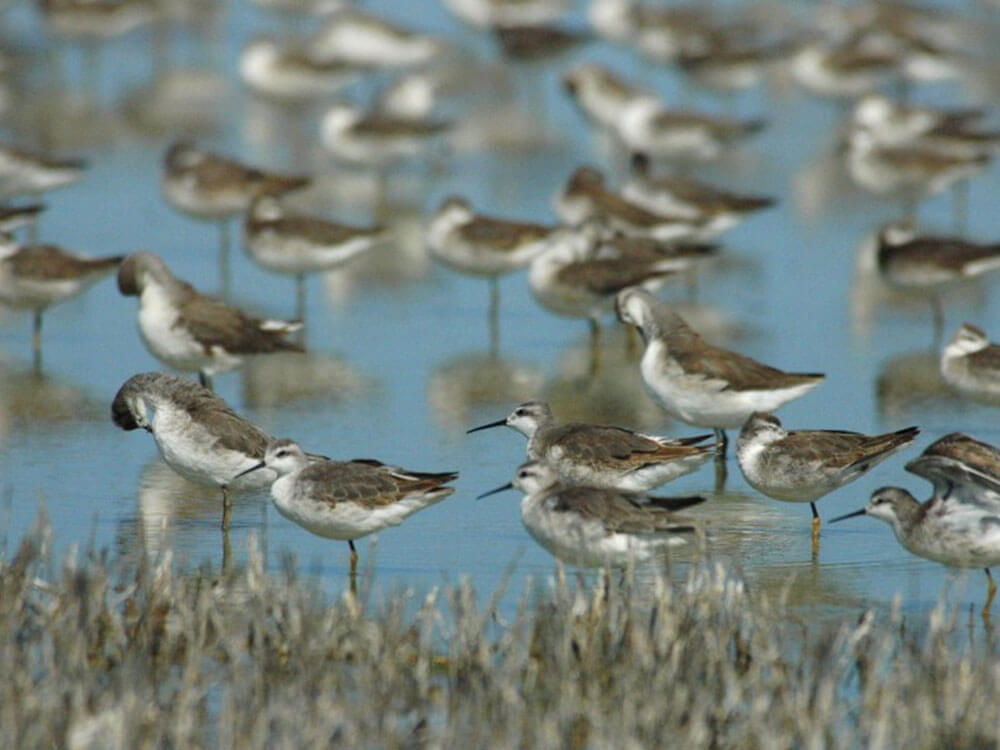
A group of Wilson’s phalaropes in a small wetland in southern Santa Fe province, Argentina. Photo: Marcelo Romano.
During this meeting, I spent two days with people who work in sites where the species is abundant. We exchanged ideas, opinions, experiences and we identified a series of priority actions that would guide the group’s next steps—this was the birthplace of the International Phalarope Working Group. Surrounding oneself with colleagues who share the same passion and commitment for shorebird conservation is the best gift of optimism and energy that anybody can receive. Just like that, the doubts that I was having about continuing to work with phalaropes disappeared.
After that meeting, I had the opportunity to join the Western Hemisphere Shorebird Reserve Network (WHSRN) Executive Office to work towards the connection and conservation of inland saline wetlands and the shorebird species that depend on them, with my focus being on phalaropes. The priority actions that had been identified during the meeting were important in defining how and on what we would work. Remedying the lack of recent data on global population size and population trends was a priority; without reliable data in these fields, it would be impossible to direct effective conservation actions for the species.
We began to think about how we could conduct censuses in non-breeding areas, visiting the maximum number of possible sites and, ideally, doing so simultaneously. At this time of year, the majority of individuals concentrate in two main areas; High-Andean salt lagoons of Argentina, Chile, Bolivia, and Peru, and lowland saline lagoons in central and southern Argentina.
Covering these two areas was going to be a considerable challenge. However, an opportunity arose out of another initiative being coordinated by colleagues in the WHSRN Executive Office along with the Alto-Andean Flamingo Conservation Group (Grupo de Conservación de Flamencos Altoandinos – GCFA). The GCFA performs periodic monitoring of the High-Andean wetlands that are of importance to the species of flamingos that occur in South America; the Andean Flamingo, the Chilean Flamingo, and the Puna Flamingo. This involves simultaneous monitoring in more than 200 key sites every five years.
The Sixth Simultaneous Census of Alto-Andean Flamingos was scheduled for February 2020 and this year WHSRN would also participate, carrying out the First International Simultaneous Census of Shorebirds. It was now going to be possible to gather data on the importance of these sites for shorebirds in areas that had never been monitored previously. If we were able to coordinate a census in the lowland saline wetlands of Argentina during the same period of time, this would give us the kind of coverage that we had never before achieved for Wilson’s Phalarope. We immediately began to work on making it a reality.
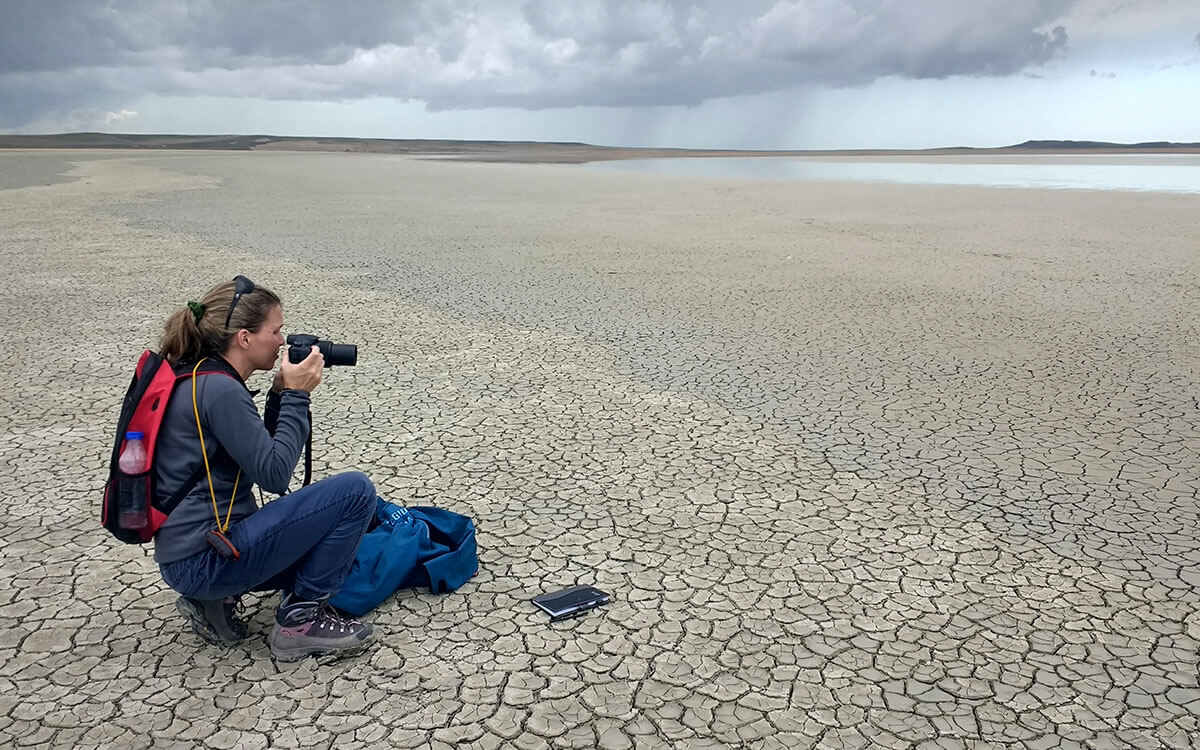
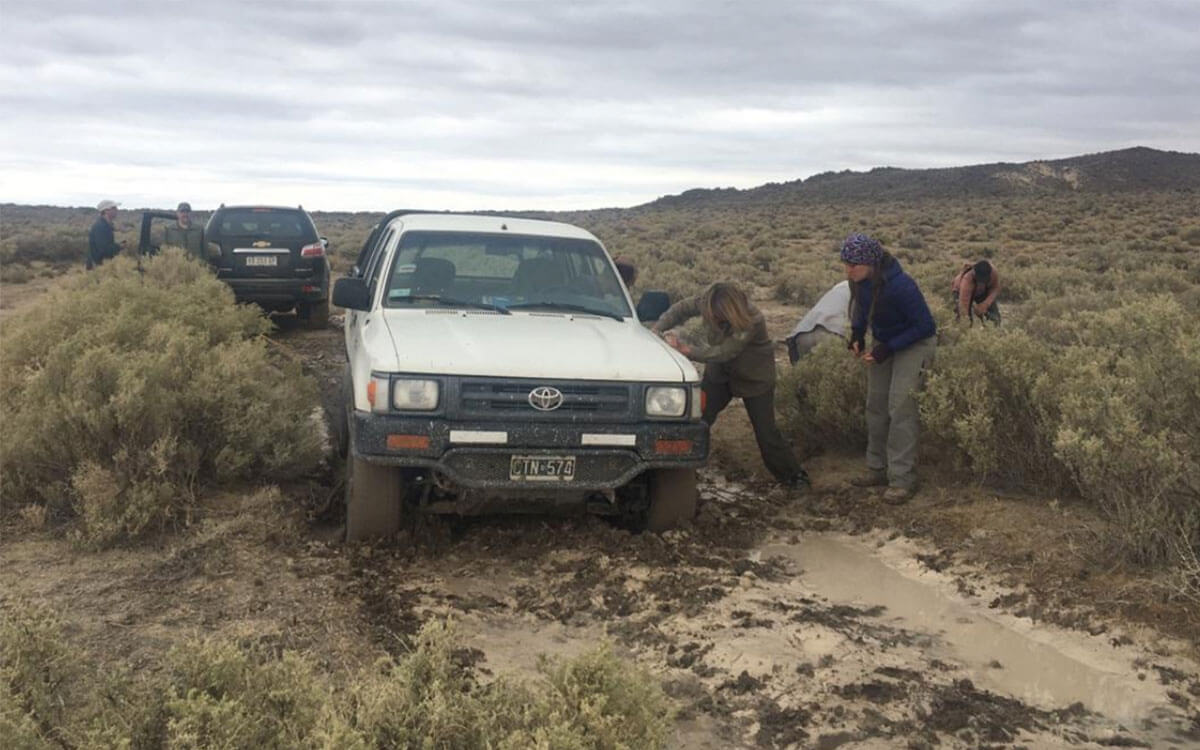
Left: Surveying phalaropes in saline wetlands in Tierra del Fuego, in the southern tip of Argentina. Photo: Tabaré Barreto Right: Volunteers try to free the vehicle that got bogged down during their field trip in Rio Negro, Patagonia, Argentina. Photo: COA Tintica.
Argentina is a country of considerable size, the fourth biggest in the Americas, so covering the maximum amount of possible sites would require a large-scale effort. The selection of census sites was based on previously established criteria related to this species’ habits. To ensure the maximum possible coverage of more than 300 potential sites, we coordinated with Aves Argentinas, a national NGO, to reach out to volunteers through their network of birdwatchers clubs to help conduct surveys. We contacted volunteers, assigned them to sites, and encouraged them to census all of the wetlands they could to make the area of coverage as comprehensive as possible.
The counting methodology was based on the protocol of the International Shorebird Survey (ISS). This is a simple method that many of the volunteers were already familiar with, but it was also chosen because it was the method that had been used in the previous High-Andean censuses, thereby allowing us to later combine the results into a single database.
After several weeks of coordination, we were finally ready to start. During the ten days of the census, more than 110 volunteers participated from 17 provinces across the country – from Formosa to Tierra del Fuego – donating their time and collecting the data to address the proposed objectives.
As the days went by, information began to arrive from the different points across the country about the obstacles that volunteers were facing. For example, simply accessing many of the sites was a challenge in itself because of blocked roads or lagoons being located on private properties. Other challenges included traveling long distances and poor road conditions. Patagonia, with its tablelands and extensive and inhospitable steppes, proved to be the most difficult region to survey. Luckily, we were able to count on committed and adventurous volunteers, some of whom traveled more than 2000 km across the steppes in their own vehicles to reach the designated sites.
Many sites were found to be dry, including some that had previously hosted considerable numbers of phalaropes. The drought season had a visible effect on these kinds of environments, reducing habitat availability and potentially resulting in concentrations of greater numbers at fewer sites.
Only a couple of site locations—Laguna Mar Chiquita and Lago Epecuén—showed high abundances of phalaropes. The less fortunate volunteers returned from their journeys without recording a single individual. But all of these observations are important; the datum ‘zero’ is equally valuable information that helps us to better understand the distribution of the species within the study area.
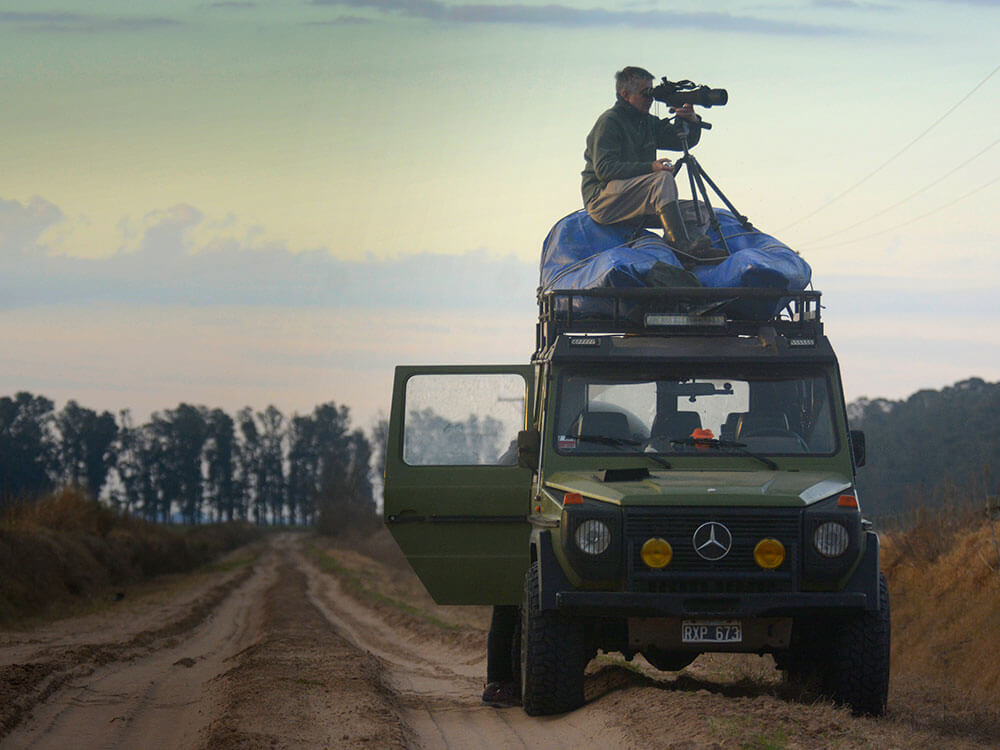
Inaccessibility of several sites meant volunteers needed to get creative to count phalaropes. Photo: Marcelo Romano.
In the list of sites to census, there was one that stood out from the rest: Laguna Mar Chiquita. This is an extensive saline wetland located in Córdoba province in Argentina that covers more than 600,000 hectares. On average, half a million Wilson’s Phalaropes use this site during the austral summer, where they concentrate in the northwestern part of the lagoon. The shallow waters and the high salinity at this site contribute to a high density of their invertebrate prey, and the area is practically unreachable both by land and by boat. As a result, the phalarope numbers for Mar Chiquita during the 2020 census were obtained from one aerial survey of the entire lagoon. The counts were performed by an observer with more than 20 years of experience in population estimates at this site, accompanied by two photographers who captured images of the flocks to support the estimates. The crew also estimated flamingo numbers during the aerial survey, as Mar Chiquita is also an important site for flamingoes, particularly Chilean Flamingos. For this reason, the lagoon is also included as a regular survey site for the GCFA.
The ten days of censuses flew by, and before we knew it the project that we had put so much effort into making a reality was complete. The next step was to collate and analyze the field data. Right now, we are working on an updated phalarope estimate based on the data obtained in all of the surveyed sites, including both the High-Andean lakes and the lowland wetlands. We are also researching historical information for some of the key sites in order to evaluate population trends. All of this information will contribute to updating the Wilson’s Phalarope Conservation Plan and will be useful in guiding effective conservation action for Wilson’s Phalarope on their wintering grounds.
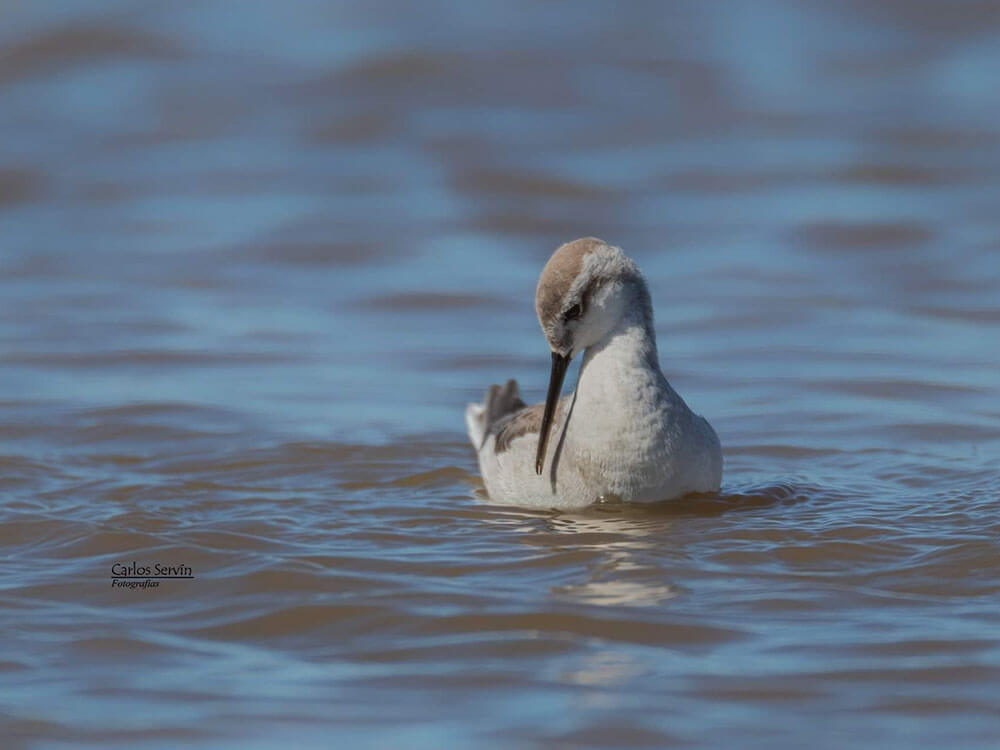
One of the thousands of phalaropes that were swimming and feeding at Epecuen Lake in the Buenos Aires Province. Photo: Carlos Servín
This census would not have been possible without the participation of volunteers. Attempting to monitor the entire population of a species with such a large geographic range is a task that can only be achieved with an “army” of volunteers. Besides generating databases that would be impossible to obtain by any other means, the participation of volunteers in initiatives such as this helps to involve communities in nature conservation, to increase the perception of the value of their natural heritage, and to bring more people into contact with the species so that they may learn about it and, directly or indirectly, help to conserve it.
The quantity of information generated was very important and we are pleased with the results. Thanks to these data, we have more and better information than ever before, with which to orient our future actions. Coordinating this census was highly enjoyable, with plenty of challenges and lots of lessons learned. We hope to do it again in the future; perhaps in five years, when we will again be joining efforts to count phalaropes of the altiplano and lowlands of Argentina, with the hope of confirming that the conservation actions that we are now implementing for the species have been effective.
Cover Photo: A flock of thousands of phalaropes seen from the airplane during the aerial survey at Mar Chiquita Lake, Argentina. Photo: Matias Michelutti.





